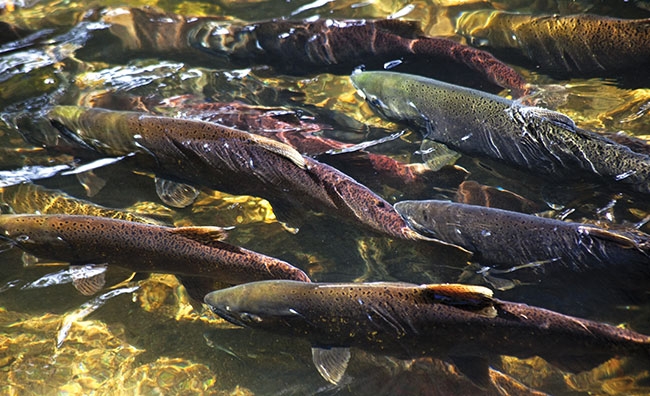
Features
Research
Breeding to resist gill disease focus of new £3.5m project
The potential to breed salmon with enhanced resilience to gill infections and other health issues, such as sea lice, is a core part of a new £3.5 million (US$4.6 million) Scottish research and development initiative.
April 5, 2019 By Colin Ley
 “Gill health is up there with sea lice as one of the biggest challenges facing salmon farming The potential to breed salmon with enhanced resilience
“Gill health is up there with sea lice as one of the biggest challenges facing salmon farming The potential to breed salmon with enhanced resilienceThe new funding involves two Scottish research bodies, two commercial companies and 10 other organisations, drawn together by the Scottish Aquaculture Innovation Centre (SAIC).
“Gill health is up there with sea lice as one of the biggest challenges facing salmon farming, not only in Scotland, but across all salmon-producing countries,” said Robin Shields, senior aquaculture innovation manager at SAIC.
“This is an internationally significant issue, which we’re aiming to address through this focused effort from some of the top minds in the field. The health of a fish’s gills is absolutely critical to its overall wellbeing.”
Shields says the project aims to provide the aquaculture industry with the essential knowledge and tools to manage and control outbreaks, and eventually “prevent disease as far as we can by breeding fish with greater natural resistance.”
The key research players are: Scotland’s Rural College; the University of Edinburgh’s Roslin Institute; Loch Duart, an independent salmon farming company; and Landcatch Natural Selection, a leading Scottish salmon breeding business and part of Hendrix Genetics.
The initiative will complement an £800,000 (US$1.06 million) SAIC co-funded project announced in April 2018, which aimed at developing new feeds to promote salmon health and devise diagnostic tools for monitoring gill health.
The first stage of the new project will take an “innovative and unique approach” to explore the factors that cause gill damage or disease to occur. This includes examining areas such as the local environment, water quality and temperatures, as well as nutrition, farming practices, and equipment.
The second stage will focus on analysing the genetic characteristics that cause some salmon to be more vulnerable to gill disease than others. It’s hoped the results of this work will allow the aquaculture industry to breed fish with enhanced resilience to gill infections and other health issues.
Print this page





